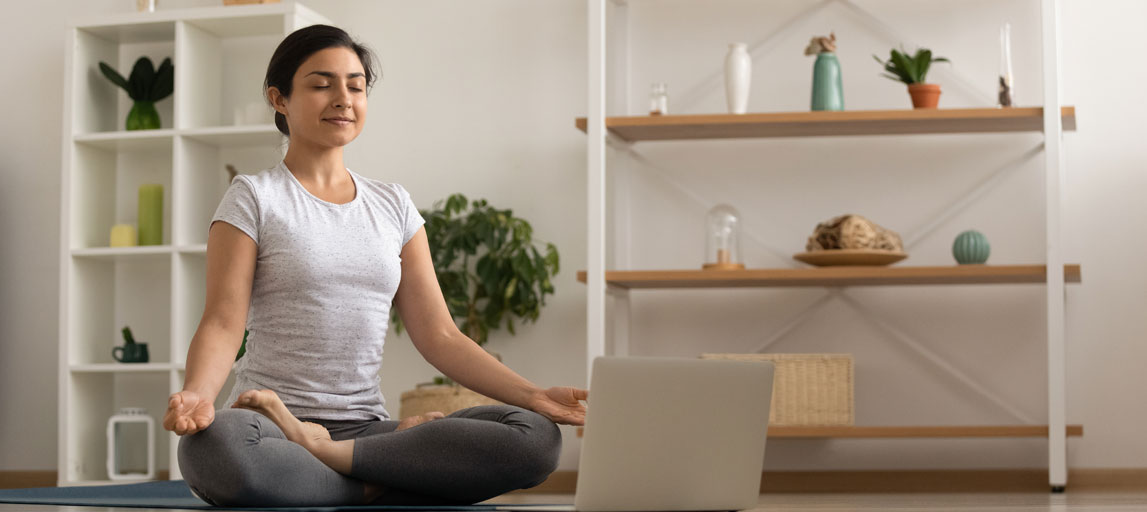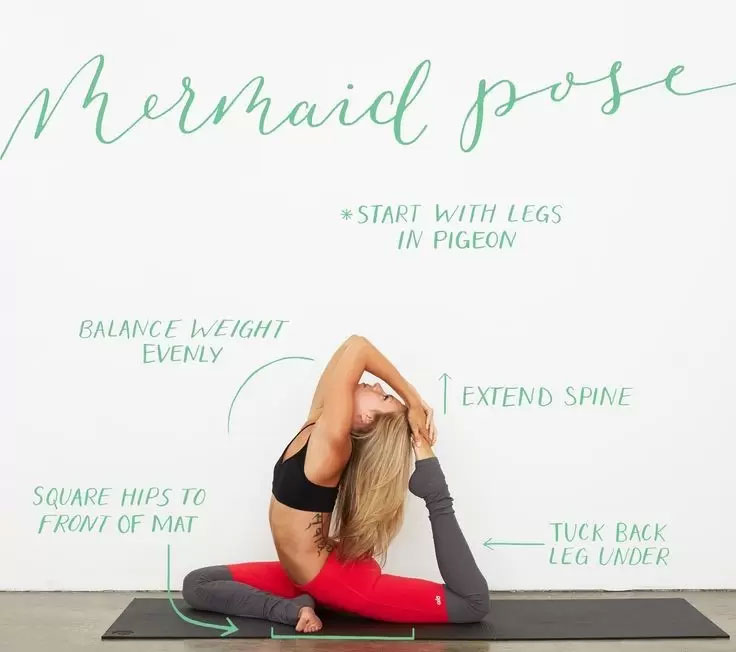Mermaid Pose (Eka Pada Rajakapotasana) is an advanced version of One-Legged King Pigeon Pose (Eka Pada Rajakapotasana) that deepens the backbend and opens the hips. Imagine your legs and hips forming the tail of a mermaid (or merman) with all the looseness and fluidity of a sea-swimming creature as you practise the posture. In the online yoga classes in Sydney, the experts will help you perfect the pose which will give you the flexibility over your whole front torso.
Benefits of Doing Mermaid Yoga Pose
The mermaid yoga position increases hip and spine mobility when practiced correctly. Also –
- improves balance while strengthening the pelvic floor and creating expansiveness throughout the body.
- allows you to have more control over your sexual impulses.
- strengthens your hip flexors, lower back, and quad muscles while making you more flexible.
- improves the body’s ability to cope with both mental and physical stressors.
- provides flexibility, which lowers the likelihood of joint injuries.
- promotes a healthy reproductive system, lowers miscarriage rates, regulates hormones, improves sperm count, and overall health.

How To Perform Mermaid Pose
Slide your right leg forward with a flexed foot, dropping your knee by your right wrist, starting on the tabletop.
Allow your right shin to rest on the ground and extend your left leg back in a straight line from your hip, with your right foot in front of your left hip.
Lean forward for a few breaths to extend your right hip, then push yourself up so your body is erect and your chest is proud. Activate your core.
Bring your left hip forward to align with your right so that your hips are squared. Tilt your hips forward slightly and send your tailbone down. Before the backbend, this creates room in your low back.
Bring your hands to your hips and gently press down, allowing the action to assist you extend your chest up and back. Each vertebra and rib should bend back. Lean back in your chair and raise your chest to the ceiling.
Allow your right hand to rest on your right thigh, keeping your hips in place. Bend your left knee and reach back to grip the inside of your left foot with your left hand. In the crease of your left elbow, place your left foot and press onto the arm. Engage the area where your left glute and hamstring meet.
Reach your right arm up and above, hands clasped behind your head, with a long, powerful spine.
Softly gaze up and hold for five breaths. Exit by flowing through chaturanga, upward dog, and downward dog, releasing your arms and left leg behind you. Rep the process on the other side.

Important tips to remember
If you have a recent or chronic shoulder, knee, ankle, or sacroiliac injury, avoid this position. If you have high or low blood pressure, or if you have heart problems, you should avoid this posture. This posture should only be attempted under the supervision of an experienced and qualified instructor if you have a spine or back injury. Only practise this posture if you can execute One-Legged King Pigeon Pose correctly and comfortably. Always stay within your own capabilities and boundaries. Before doing yoga, see your doctor if you have any medical problems.
Also remember to warm up with hip openers and light backbends before attempting this pose. To keep hips square, place a block under the glute of whichever leg is bent parallel to the front of the mat. The yoga in castle hill trainers will guide you to attain the maximum benefit of this pose and improve spine and hip mobility.





